Link para o artigo original : https://www.oaktreecapital.com/insights/insight-commentary/market-commentary/the-roundup-top-takeaways-from-oaktree-s-quarterly-letters-june-2023-edition
The Roundup: Top Takeaways From Oaktree’s Quarterly Letters – June 2023 Edition
We believe the investment environment may be undergoing a dramatic change, not simply a cyclical fluctuation. If the easy-money era is truly over, the consequences for investors will be profound. In particular, a starkly different environment will likely produce a new set of outperforming asset classes. In the current installment of The Roundup,1 Oaktree portfolio managers explore the changes they’re already seeing in financial markets and also consider what may lie ahead. As a bonus, we’ve also included an excerpt from Howard Marks’s recent memo to clients.
1
Market Outlook:
Tug-of-War
The overarching theme of my sea-change thinking is that, largely thanks to highly accommodative monetary policy, we went through unusually easy times in a number of important regards over a prolonged period, but that time is over. There clearly isn’t much room for interest rate declines from today’s levels, and I don’t think short-term interest rates will be as low in the coming years as in the recent past. For these and other reasons, I believe the years ahead won’t be as easy. But while my expectations may prove correct, there’s no evidence yet on which I can hang my hat. Why not? My answer is that the economy and markets are in the early stages of a transition that’s far from complete.
Asset prices are established through a tug-of-war between buyers who think prices will rise and sellers who think they’ll fall. There’s been an active one over the last year or so as sentiment has waxed and waned regarding the outlook for inflation, recession, corporate profits, geopolitics, and especially a Fed pivot back to accommodation. The tug-of-war is ongoing, and, as a result, the S&P 500 is within a half percent of where it was a year ago.
I’ve been thinking lately about the fact that being an investor requires a person to be somewhat of an optimist. Investors have to believe things will work out and that their skill will enable them to wisely position capital for the future. Equity investors have to be particularly optimistic, as they have to believe someone will come along who’ll buy their shares for more than they paid. My point here is that optimists surrender their optimism only grudgingly, and phenomena such as cognitive dissonance and self-delusion permit opinions to be held long after information to the contrary has arrived. This is among the reasons why they say of the stock market: “Things can take longer to happen than you thought they would, but then they happen faster than you thought they could.” Today’s sideways or “range-bound” market tells me investors possess a good amount of optimism despite the worries that have arisen. In the coming months, we’ll find out if the optimism was warranted.
2
Global Credit:
Locked In
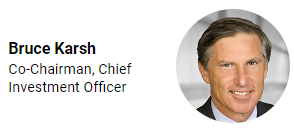
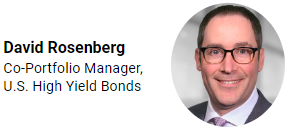

We believe the opportunities in credit investment today are as attractive as they’ve been in many years – largely because of investors’ ability to potentially lock in high yields. In most below-investment grade asset classes, yields are now high enough to meet institutional investors’ 7% or 8% return targets. For example, U.S. and European high yield bonds currently offer average yields near 9%, roughly twice the level available at the end of 2021.2 (See Figure 1.) Importantly, in fixed income – unlike in equities – even if volatility impacts the price of a security between now and maturity, investors will earn their contractual return unless there’s a default.
One should consider what investors would have needed to do to earn a yield near 9% only two years ago. They would likely have had to take on meaningful risk in the credit markets, sacrifice liquidity, or purchase equities at elevated price-to-earnings ratios. In short, it was difficult to safely and dependably pursue high returns in a low-return world. But now that’s changed.
Importantly, opportunities for generating alpha have risen along with yields. While we don’t expect interest rates to climb much higher in this cycle, we also don’t think they’ll drop back near zero any time soon. In a more normalized interest rate environment, we believe dispersion in performance between issuers, sectors, and geographies will continue to increase, creating a credit picker’s market in which skill in bottom-up fundamental analysis will be essential. And investors that can allocate across asset classes may be especially well positioned to take advantage of these market inefficiencies.
Thus, after decades of accommodative monetary policy, cheap debt, and robust equity returns, we may now be entering a new era, as our co-chairman Howard Marks eloquently described in his 2022 memo Sea Change. In this altered environment, those investors who’ve properly done their credit work may be rewarded, while those who’ve come to depend on a “Fed put” may be in for a rude awakening.
Figure 1: Yields of High Yield Bonds Have Risen Significantly Since 2021
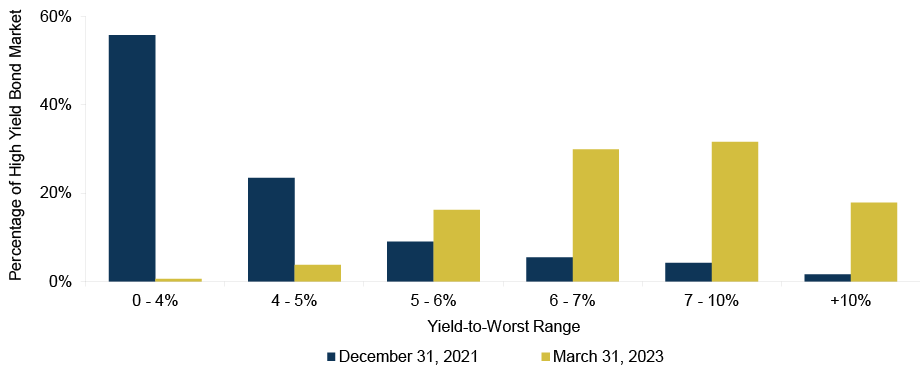
Source: ICE BofA Non-Financial Developed Market High Yield Index, as of March 31, 2023
3
Opportunistic Credit:
Play Ball

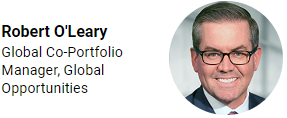
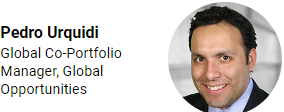
We may be in the early innings of what could be a sustained rise in distressed opportunities. While we haven’t yet witnessed a significant wave of credit downgrades, defaults, or spread-widening in the current cycle, we’ve already seen pockets of stress emerge, especially since the start of the regional bank turmoil in March. But what catalyst might trigger a dramatic increase in distressed credit opportunities? We have a few suggestions:
First, we may see a psychological shift if defaults increase. While default rates on U.S. high yield bonds and leveraged loans haven’t spiked, both are at two-year highs.3 If they continue to creep upward, investors may start to panic that they’re next in line to lose money. This could create a surge of motivated selling.
But will default rates continue to rise? We believe they will. Almost no companies anticipated that interest rates would jump by 500 bps in one year, and thus a substantial percentage failed to adequately hedge their interest rate risk. As a result, many businesses are being squeezed by higher borrowing costs and increasingly unsustainable debt burdens. And the longer interest rates remain elevated – which Federal Reserve officials keep insisting could be a meaningful period of time – the more likely it is that companies will struggle to service their debt.
It’s true that default rates could be lower than we’ve seen in prior recessions because (a) debt issued in recent years frequently featured few, if any, covenants (which means there are fewer opportunities for companies to default) and (b) near-term maturities in below-investment grade credit are limited, due to the wave of refinancings in 2020-21. However, the amount of lower-rated corporate debt outstanding has quadrupled since 2007 to over $12 trillion globally, so even a modest increase in the default rate could create an expansive set of investment opportunities.4
Next, it’s possible that we could see a cash crunch among corporations. Even though corporate fundamentals may appear to be relatively healthy, we believe cash positions are more strained than today’s yield spreads might indicate. We communicate regularly with Oaktree investment professionals across all strategies about the industries they cover. This helps us get a good sense of what is really happening in the economy. Today we’re hearing about the negative impacts of slowing growth and rising costs across many industries.
Finally, we believe the world has changed since Silicon Valley Bank collapsed on March 10. While the current problems in the banking system are unlikely to rise to the level of a 2008-style crisis, the weakness has already caused financial conditions to tighten. Investors may therefore increasingly be able to (a) purchase loans from banks seeking to reduce risk and raise liquidity; (b) provide rescue financings to regional banks; (c) buy the distressed debt of both regional banks and the companies heavily reliant on them; and (d) create capital solutions for businesses that have historically depended on regional banks for funding.
In this environment, opportunistic investment strategies that have capital to deploy, extensive experience in downcycles, and structuring expertise may be well positioned to play offense in what could be a protracted ballgame.
4
Real Estate Debt:
Prime Time
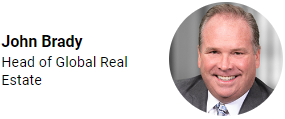
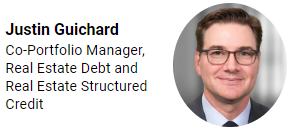
The real estate debt market has undergone a fundamental shift in the last year, primarily due to the rapid rise in interest rates. We believe the resulting retreat among traditional real estate lenders, decrease in transaction volumes, sinking valuations, and imposing wall of debt maturities has created an extremely attractive opportunity for nonbank real estate lenders prepared to fill this funding void.
The Federal Reserve’s hawkish interest rate policy over the last year has caused three of the primary providers of commercial real estate debt capital – commercial mortgage-backed securities markets, banks, and life insurance companies – to all go into retreat for the first time in decades. CMBS issuance in 4Q2022 fell to the lowest quarterly level since 4Q2011, while full-year issuance in 2022 decreased by 36.1% year-over-year.5 Lending activity at the beginning of 2023 has been even more muted, with CMBS issuance in the first quarter of the year down by 77% YoY.6 The problems facing regional banks following the Silicon Valley Bank collapse in March have only exacerbated the problem.
Moreover, we’re seeing a vicious cycle in commercial real estate, as deflated valuations and increased volatility in asset prices have resulted in widening bid/ask spreads between buyers and sellers – which has only made traditional capital providers less likely to lend. Meanwhile, the need for financing in the sector is enormous. Over $2.5 trillion in commercial real estate debt is maturing in the next five years. (See Figure 2.)
But this vicious cycle may prove virtuous for nonbank real estate debt investors. Those with capital to deploy are increasingly able to lend at elevated yields against high-quality assets with moderate leverage and depressed valuations. Moreover, they’re now often able to secure lender-friendly terms that provide substantial downside protection. In other words, we believe we’re seeing the most attractive environment for real estate debt investors since the Global Financial Crisis.
Figure 2: CRE Faces an Enormous Wall of Debt Maturities in the Next Five Years
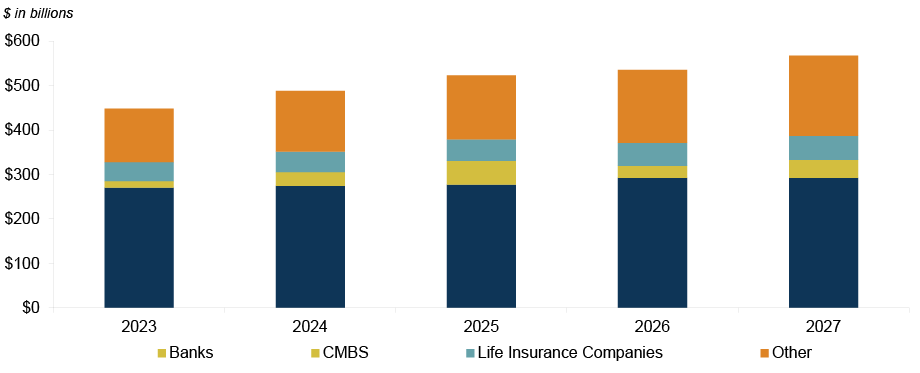
5
Direct Lending:
Running of the Bulls

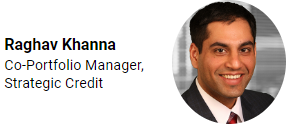

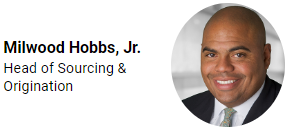
Many direct lenders that were bullish in 2020-21 have since become more conservative, which has created compelling opportunities for those investors with the skill, discipline, and capital to take advantage of this retreat.
In the last year, many direct lenders have slowed their investment pace and reduced the size of their new investments. Middle-market direct lending volumes dropped by 50% quarter-over-quarter in 1Q2023 to just $12 billion, the lowest level since 2Q2020.7 This is partly because many sponsor-backed deals completed between 2020 and 2021 left portfolio companies with capital structures that now appear unstable given the 500 bps increase in base rates and rising leverage levels. Many private lenders are thus reserving capital to deal with issues in their existing portfolios instead of deploying it into new deals. Meanwhile, U.S. commercial banks are tightening credit standards, reducing lending volumes, and lending at higher interest rates that build in more cushion above their cost of funds. (See Figure 3.)
As a result, loans for new leveraged buyouts have become scarce and more expensive. Even the largest private equity firms have to pay significantly higher coupons and fees in order to raise enough debt capital to finance their buyouts. And contrary to historical norms, it’s now often the case that the larger the LBO, the more difficult and potentially more expensive it is to attract sufficient lenders and capital.8
Unsurprisingly, M&A volume has been muted in this environment. Would-be sellers still often expect the lofty prices seen in 2020-21, while potential buyers have been lowering their bids to reflect the new reality: high interest charges, limited financing options, and a slowing economy. Typically, declining M&A activity is accompanied by tightening yield spreads in the lending market and more borrower-friendly deal terms, but in 2023, private lenders have often been able to secure higher coupons and stronger investor protections than they could in recent years.
In short, the market environment has become attractive for those direct lenders with available capital who were patient during the boom years and thus have few, if any, legacy portfolio issues. They may now be well positioned to benefit from the opportunities created by the withdrawal of the chastened bulls.
Figure 3: Banks Are Tightening Lending Standards

Source: Federal Reserve Board, Senior Loan Officer Opinion Survey on Bank Lending Practices, as of April 30, 2023
6
Life Sciences Lending:
Positive Prognosis


The opportunity set for life sciences direct lenders has expanded meaningfully in the last year, as biotechnology companies have experienced significant volatility in the public markets. While the S&P Biotechnology Select Industry Index has risen modestly in 2023, it fell by 26% in 2022 and remains 48% below its peak in early 2021.9 This choppiness has caused life sciences companies to increasingly turn to private markets for financing.
But private capital has mostly flowed to a small set of life sciences companies, meaning many businesses are being left behind. As a result, we’ve seen increasing interest for non-dilutive capital from a broad set of biotech firms, including large publicly traded companies seeking to fund product commercialization and extend their cash runways.
These dynamics have created compelling opportunities for life sciences lenders with subject-matter expertise, structuring experience, and the discipline to wade through the large pipeline. We believe some of today’s choicest opportunities involve companies with therapies that are both (a) innovative (i.e., not those offering only slight modifications over existing medications) and (b) in the latter stages of development.
Overall, we remain bullish about the outlook for the sector – even if economic activity slows meaningfully – as lifesaving or life-extending therapies tend to be purchased by insurance companies or state healthcare systems and thus sales aren’t usually closely correlated with economic activity. While the outlook for life sciences lending has long been positive, the current combination of strong underlying fundamentals, limited financing options, and deflated valuations has made the prognosis even better.
7
Senior Loans:
On the Other Hand
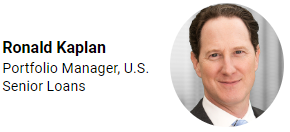
The senior loan market continues to face the interest rate paradox we’ve discussed in previous quarters: Rising interest rates can make loans more attractive to investors, due to the increase in coupons, but elevated rates can also negatively impact credit quality, as borrowers may struggle with higher interest payments.
In early 2023, retail investors’ concerns about deteriorating credit quality in the loan market have appeared to outweigh the appeal of rising yields, which now top 10% on average.10 Loan mutual funds and loan ETFs have recorded net outflows of $16.5 billion in the first five months of the year, following the $12.8 billion in net outflows in 2022.11
Looking forward, we think credit risk in the loan market is growing. The default rate for the loan universe was only 2.5% as of May 31, below the long-term historical average of 3.1%.12 But downgrades in the U.S. exceeded upgrades by $110 billion in the year to date.13 And even if default rates fail to reach recessionary levels, we may see a decline in recovery rates, given the prevalence of covenant-lite structures and loan-only borrowers.
While investors may struggle to untangle these competing dynamics, we believe those with few legacy portfolio issues may be in a position to purchase loans at low prices and elevated yields as they wait to see how this paradox will play out.
8
Emerging Markets Debt:
Expected Turbulence
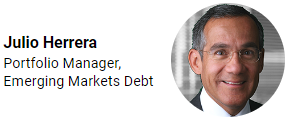
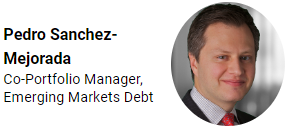
While the emerging markets high yield bond index currently offers a yield above 10%14 – a level rarely reached over the past decade – we still don’t believe yield spreads fully reflect the elevated risk in EM debt markets, as the index’s yield spread remains near the historical average.15 (See Figure 4.) It’s unclear how long this calm will prevail, however, as multiple trends are negatively impacting the short-term outlook for many EM borrowers:
-
While most analysts’ 2023 EM growth forecasts are fairly bullish, this is largely due to the expected rebound in China after a subdued 2022. Most other EM countries are projected to grow at a slower pace compared to 2022.16
-
A majority of EM companies posted 4Q2022 earnings that were below analysts’ estimates, and 1Q2023 earnings are expected to contract by over 20% year-over-year.17
-
Capital scarcity remains a key headwind. EM financing outflows are expected to continue in 2023, following a cash-strapped year in which EM companies paid $480 billion in debt service while issuing just $220 billion in bonds.18
-
Stressed companies located outside of countries or industries with idiosyncratic issues (e.g., Ukraine, Russia, and China’s property sector) largely avoided default in 2022. However, they did so by relying on a financing runway that is now one year shorter.
-
Geopolitical tensions in EM remain elevated: The war in Ukraine, worsening China-U.S. relations, populism in Latin America, and macroeconomic instability in Turkey could all erode investors’ confidence in EM credit and result in accelerating capital outflows – after $90 billion left the asset class in 2022.19
The intensification of these headwinds could weigh on the sentiment of today’s wary, capital-constrained EM investors and potentially lead to market dislocation, enabling bargain hunters to invest in resilient EM businesses at attractive entry points.
This is especially important given the positive trends impacting the long-term outlook for EM countries, including their access to vast natural resources and abundant labor forces as well as the fact that these countries account for an increasing percentage of global growth. Ultimately, we believe EM investors capable of handling short-term volatility may be well positioned to enjoy long-term benefits.
Figure 4: Yields Spreads for EM High Yield Bonds Remain Near Their Historical Average

Source: JP Morgan CEMBI Diversified High Yield Index, as of May 26, 2023
ENDNOTES
- 1The content is derived from or inspired by ideas in 1Q2023 letters or other materials sent to clients in 2Q2023; the text has been edited for space, updated, and expanded upon where appropriate.
- 2ICE BofA US High Yield Constrained Index; ICE BofA Non-Financial Developed Market High Yield Index, as of May 31, 2023.
- 3JP Morgan Default Monitor, as of May 31, 2023.
- 4Bloomberg, Credit Suisse, ICE BofA, Preqin, Cliffwater, as of March 31, 2023; For middle-market direct lending data: Preqin, as of June 2022. “Lower-rated debt” includes BBB-rated debt as well as below-investment grade debt.
- 5Green Street.
- 6April 2023 J.P. Morgan CMBS Issuance Report.
- 7Refinitiv.
- 8Based on Oaktree observations in the market.
- 9S&P Biotechnology Select Industry Index (SPSIBI), as of June 6, 2023.
- 10Credit Suisse Leveraged Loan Index, as of May 31, 2023.
- 11JP Morgan, as of May 31, 2023.
- 12JP Morgan; last-twelve-month default rate.
- 13JP Morgan, as of May 31, 2023.
- 14JP Morgan CEMBI Broad Diversified High Yield Index, as of May 31, 2023.
- 15JP Morgan Global Research.
- 16World Bank Group.
- 17JP Morgan Global Research.
- 18JP Morgan Global Research.
- 19JP Morgan Global Research.
NOTES AND DISCLAIMERS
This document and the information contained herein are for educational and informational purposes only and do not constitute, and should not be construed as, an offer to sell, or a solicitation of an offer to buy, any securities or related financial instruments. Responses to any inquiry that may involve the rendering of personalized investment advice or effecting or attempting to effect transactions in securities will not be made absent compliance with applicable laws or regulations (including broker dealer, investment adviser or applicable agent or representative registration requirements), or applicable exemptions or exclusions therefrom.
This document, including the information contained herein may not be copied, reproduced, republished, posted, transmitted, distributed, disseminated or disclosed, in whole or in part, to any other person in any way without the prior written consent of Oaktree Capital Management, L.P. (together with affiliates, “Oaktree”). By accepting this document, you agree that you will comply with these restrictions and acknowledge that your compliance is a material inducement to Oaktree providing this document to you.
This document contains information and views as of the date indicated and such information and views are subject to change without notice. Oaktree has no duty or obligation to update the information contained herein. Further, Oaktree makes no representation, and it should not be assumed, that past investment performance is an indication of future results. Moreover, wherever there is the potential for profit there is also the possibility of loss.
Certain information contained herein concerning economic trends and performance is based on or derived from information provided by independent third-party sources. Oaktree believes that such information is accurate and that the sources from which it has been obtained are reliable; however, it cannot guarantee the accuracy of such information and has not independently verified the accuracy or completeness of such information or the assumptions on which such information is based. Moreover, independent third-party sources cited in these materials are not making any representations or warranties regarding any information attributed to them and shall have no liability in connection with the use of such information in these materials.
© 2023 Oaktree Capital Management, L.P.
Informações sensíveis e divulgação
Este memorando expressa as opiniões do autor na data indicada e tais opiniões estão sujeitas a alterações sem aviso prévio. A Oaktree não tem a obrigação de atualizar as informações aqui contidas. Além disso, a Oaktree não faz nenhuma representação, e não se deve assumir que o desempenho dos investimentos passados é uma indicação de resultados futuros. Além disso, onde quer que haja potencial de lucro, também existe a possibilidade de prejuízo. Este memorando está sendo disponibilizado apenas para fins educacionais e não deve ser usado para qualquer outro propósito. As informações contidas neste documento não constituem e não devem ser interpretadas como uma oferta de serviços de consultoria ou uma oferta de venda ou solicitação de compra de quaisquer títulos ou instrumentos financeiros relacionados, em qualquer jurisdição. Certas informações contidas neste documento sobre tendências econômicas e desempenho são baseadas ou derivadas de informações fornecidas por fontes terceirizadas independentes. A Oaktree Capital Management, L.P. (“Oaktree”) acredita que as fontes das quais tais informações foram obtidas são confiáveis; no entanto, não pode garantir a exatidão de tais informações e não verificou de forma independente a exatidão ou integridade de tais informações ou as suposições nas quais tais informações se baseiam. Este memorando, incluindo as informações aqui contidas, não pode ser copiado, reproduzido, republicado ou postado na íntegra ou parcialmente, em qualquer formato, sem o consentimento prévio, por escrito, da Oaktree.


